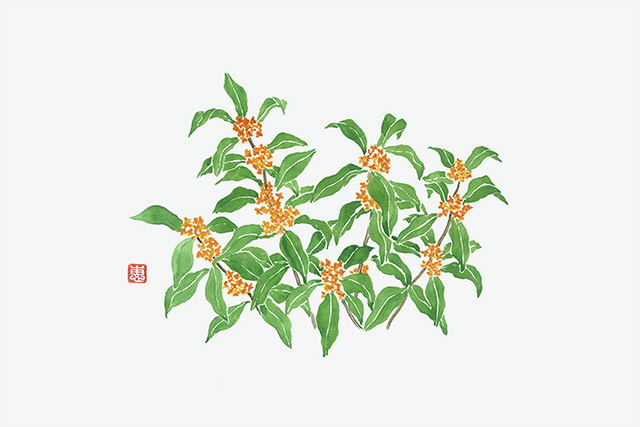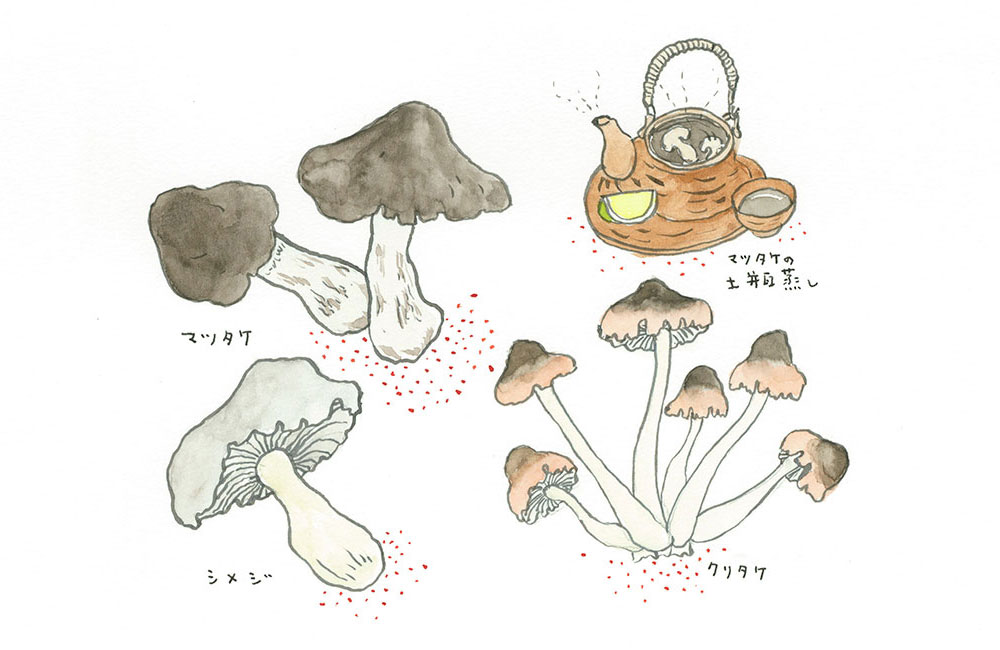

I once listened to a man proudly share his mushroom picking stories with me.
When he was talking about matsutake mushrooms in particular, his nose seemed to puff up.
“I cannot tell anyone where the matsutake mushrooms can be found.”
It must be a rule among mushroom-pickers.
He “knows all the trees that they grow on.”
Therefore, he can gather big loads on one trip into the forest.
Is that sustainable?
“I’m careful not to take it all, so that they can grow again next year.”
That is a relief.
The man wakes up early every morning and goes to the mountains, walking two hours
one way.
What sturdy feet!
He comes home to have breakfast and go to work. He is full of energy.
Of course, I have never been matsutake picking, and my role to is to enjoy them cooked.
As autumn deepens, fruits and mushrooms develop a stronger concentrated flavor.
Grilling different types of mushrooms is an irresistible treat on a long autumn night.
Artificial cultivation has made shiitake, shimeji and maitake mushrooms available year round.
Yet, we have to wait for matsutake mushrooms to grow naturally in red pine forests.
Therefore, even today, they are a seasonal specialty.
Dobinmushi* is an autumn must-make while matsutake mushrooms are available.
Here, people enjoy “matsutake sushi.”
“Matsutake sushi and two cups of sake, awaiting Kyoshi” Masaoka Shiki
“The aroma of matsutake, fragrant because of the people there” Takahama Kyoshi
I have been told that the Japanese are the only people who enjoy the fragrance of matsutake mushrooms.
Thus, foreigners may not be as impressed by the mushroom-picking man’s boasting.
*Dobimushi = matsutake mushroom steamed with Japanese broth in a teapot
Illustrated and written by Emiko Hirano
Illustrator and essayist. Born in Shizuoka Prefecture in 1961 and raised in Yokohama. Has published many illustrations and essays on mountain hiking, travels and lifestyles.
Autumn
- 初秋 (Early Autumn)
- 晩秋 (Late Autumn)
- 新涼 (First Cold Air of Autumn)
- 末秋 (End of Autumn)
- 残秋 (Late Autumn)


